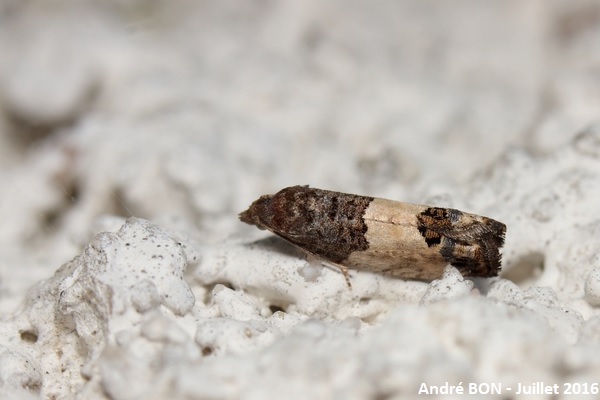

| Bud Moth (Spilonota ocellana (Denis & Schiffermüller, 1775)) |


|
|
Scientific name: Spilonota ocellana (Denis & Schiffermüller, 1775) Common name: Bud Moth Other names: Eye-spotted Bud Moth French name: Tordeuse rouge des bourgeons Order: Lepidoptera Suborder: Microlepidoptera Family: Tortricidae Subfamily: Olethreutinae Wingspan: 12-17 mm. Biotope: Orchards, gardens, bushes, moors. Geographic area: Palaearctic region: Europe, Asia east to Japan, North Africa. Introduced to North America. Flight time: June to August. Number of generations : 1 or 2 Caterpillar: Pale brown with black head and thoracic plate. Host plant: Many deciduous trees and shrubs including Apple Trees, Pear Trees, Roses, Mountain Ash Trees, etc. Damage to tree buds can have a significant impact on fruit production. |
The Bud Moth shows whitish fore wings sometimes a little greyish with some short brownish streaks. The basal area is dark grey marked with blackish. There is a brownish triangular spot, bordered with black, just before the tornus. There is a dark ocellus near the apex. It is marked with several black lines. The hind wings are dark grey. The Bud Moth over winters as a caterpillar hidden under bark or bud scales. |
| [To know more about the Bud Moth] [Next picture] [Top] |

|
The ocellus close to the apex of the wing is here marked with three very clear black lines. |
| [To know more about the Bud Moth] [Previous picture] [Top] |

|
The triangular spots close to the tornus of the fore wings join when the moth is landed to form a diamond-shaped mark on the top. |